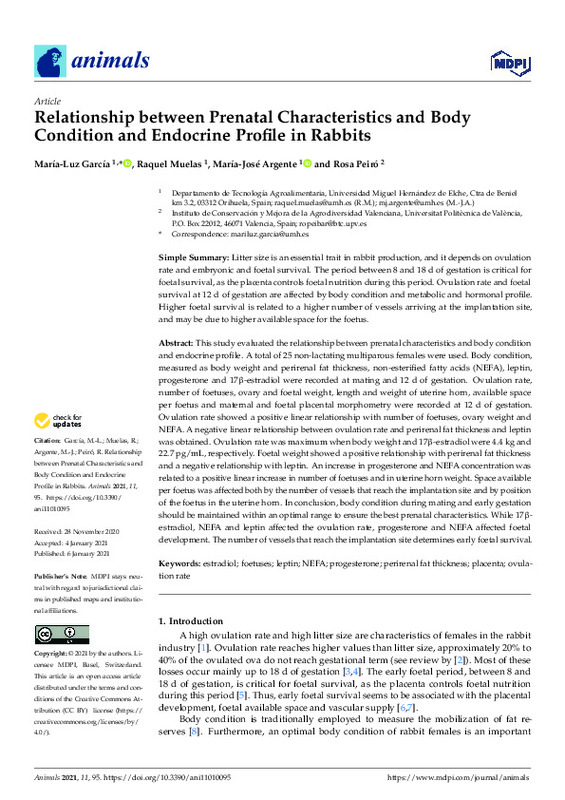JavaScript is disabled for your browser. Some features of this site may not work without it.
Buscar en RiuNet
Listar
Mi cuenta
Estadísticas
Ayuda RiuNet
Admin. UPV
Relationship between Prenatal Characteristics and Body Condition and Endocrine Profile in Rabbits
Mostrar el registro completo del ítem
García, M.; Muelas, R.; Argente, M.; Peiró Barber, RM. (2021). Relationship between Prenatal Characteristics and Body Condition and Endocrine Profile in Rabbits. Animals. 11(1):1-13. https://doi.org/10.3390/ani11010095
Por favor, use este identificador para citar o enlazar este ítem: http://hdl.handle.net/10251/182990
Ficheros en el ítem
Metadatos del ítem
| Título: | Relationship between Prenatal Characteristics and Body Condition and Endocrine Profile in Rabbits | |
| Autor: | García, María-Luz Muelas, Raquel Argente, María-José | |
| Entidad UPV: |
|
|
| Fecha difusión: |
|
|
| Resumen: |
[EN] Litter size is an essential trait in rabbit production, and it depends on ovulation rate and embryonic and foetal survival. The period between 8 and 18 d of gestation is critical for foetal survival, as the placenta ...[+]
|
|
| Palabras clave: |
|
|
| Derechos de uso: | Reconocimiento (by) | |
| Fuente: |
|
|
| DOI: |
|
|
| Editorial: |
|
|
| Versión del editor: | https://doi.org/10.3390/ani11010095 | |
| Código del Proyecto: |
|
|
| Agradecimientos: |
|
|
| Tipo: |
|









